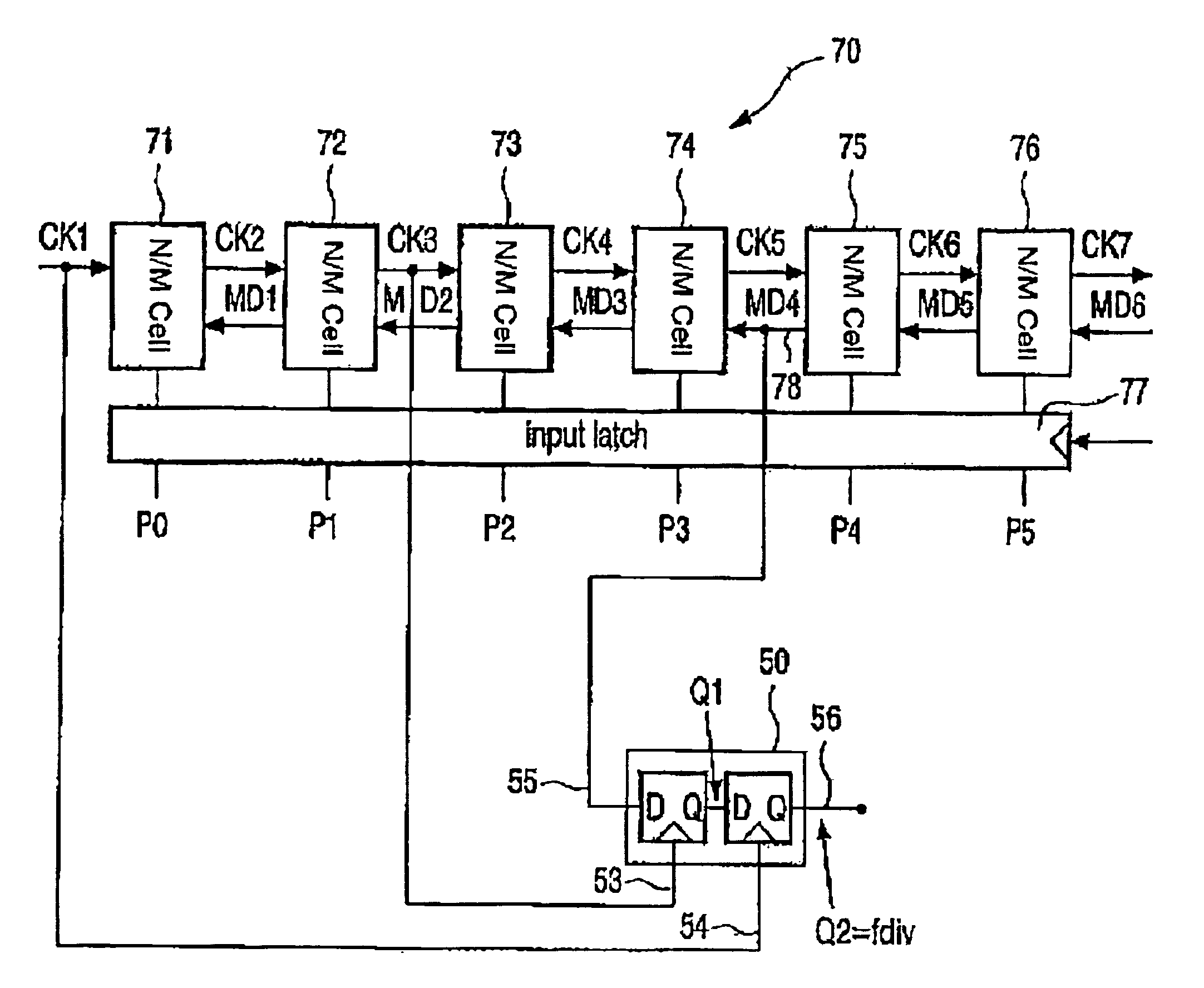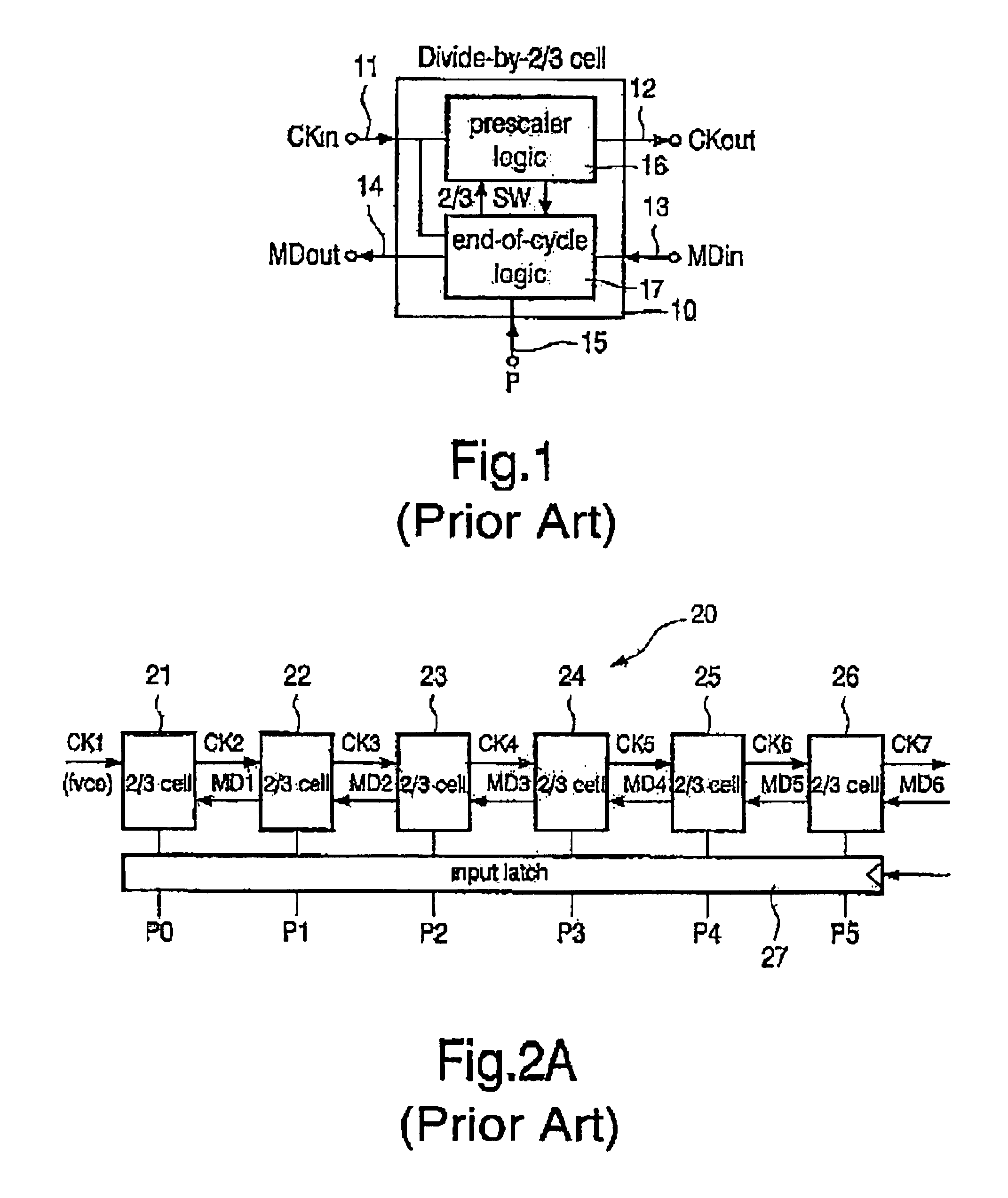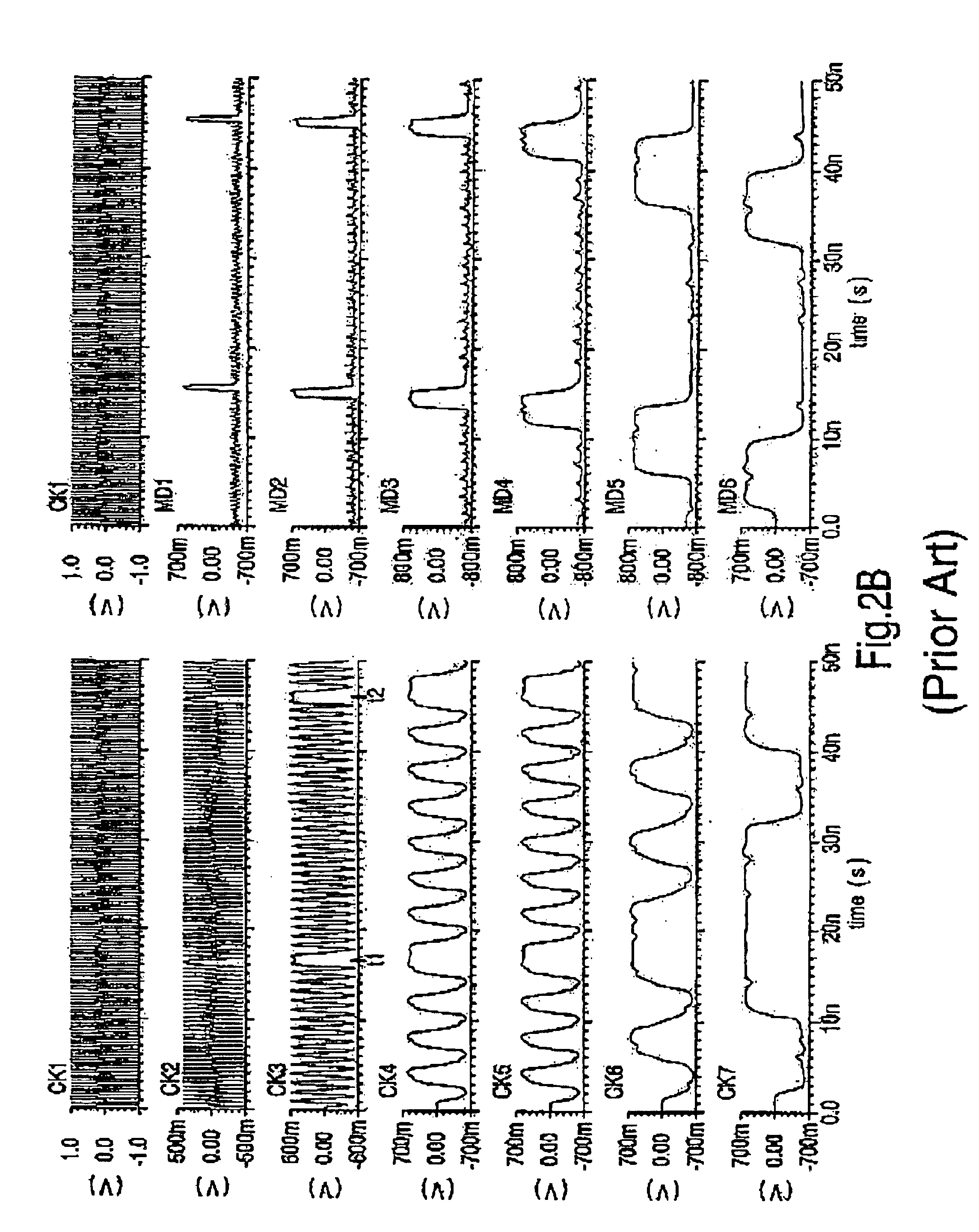Frequency divider with reduced jitter and apparatus based thereon
a frequency divider and jitter reduction technology, applied in the direction of oscillator generators, pulse automatic control, pulse technique, etc., can solve the problems of low signal-to-noise ratio, increased bit error rate, and high interference to neighboring channels, so as to reduce or eliminate jitter and achieve effective and robust technique
- Summary
- Abstract
- Description
- Claims
- Application Information
AI Technical Summary
Benefits of technology
Problems solved by technology
Method used
Image
Examples
Embodiment Construction
For sake of simplicity, certain of the signal lines in the various Figures are shown as single ended signal lines. In reality, many of the signals are differential, meaning that there are in fact two signal lines. Other signals may be digital signals that are several bits wide.
In the following, reference is made to FIGS. 2A and 3. For low-jitter design it would be preferable to take the signal MD1 as the output. Unfortunately, due to some timing constraints the output signal (fdiv) of the divider is often tapped somewhere in the middle of the divider chain 20. For Bluetooth transceivers currently under development, for example, the divider output (fdiv) is tapped at MD4 (c.f. FIG. 3). As a result, jitters at the output (fdiv) may be too large to be accepted in most applications.
It turns out that the known reclocking technique fails in such devices. Reclocking is a technique used to reduce jitter. The reclocking process calls for a less jittery signal to clock a D-Flip-Flop (DFF) 30,...
PUM
 Login to View More
Login to View More Abstract
Description
Claims
Application Information
 Login to View More
Login to View More - R&D
- Intellectual Property
- Life Sciences
- Materials
- Tech Scout
- Unparalleled Data Quality
- Higher Quality Content
- 60% Fewer Hallucinations
Browse by: Latest US Patents, China's latest patents, Technical Efficacy Thesaurus, Application Domain, Technology Topic, Popular Technical Reports.
© 2025 PatSnap. All rights reserved.Legal|Privacy policy|Modern Slavery Act Transparency Statement|Sitemap|About US| Contact US: help@patsnap.com



